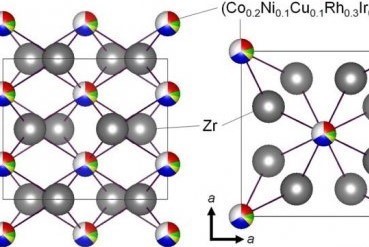The concept of high-entropy alloys provides a platform for the discovery of new superconductors . eurekalert.org.
Researchers from Tokyo Metropolitan University have developed a new superconductor made of a high-entropy alloy, using extensive data on simple superconducting substances with a specific crystal structure. It is known that high-entropy alloys retain superconducting characteristics up to extremely high pressures. The new superconductor Co0. 2ni0.1cu0.1rh0.3ir0.3zr2 has a superconducting transition at 8K, which is a relatively high temperature for alloys. The team's approach can be applied to the discovery of new superconducting materials with specific desirable properties.
More than a hundred years have passed since the discovery of superconductivity, when it was discovered that some materials suddenly exhibit minimal resistance to electric currents below the transition temperature. As we explore ways to eliminate energy losses, a way to significantly reduce power transmission losses presents an exciting prospect. But the widespread use of superconductivity is constrained by the requirements of existing superconductors, especially the necessary low temperatures. Scientists need a way to discover new superconducting materials without rough trial and error and tweak key properties.
The team, led by Associate Professor Yoshikazu Mizuguchi of Tokyo Metropolitan University, has created a "discovery platform" that has already led to the creation of many new superconducting substances. Their method is based on high-entropy alloys, where certain positions in simple crystal structures can be occupied by five or more elements. After application to heat-resistant materials and medical devices, it was found that some high-entropy alloys have superconducting properties with some exceptional characteristics, in particular, maintaining zero resistivity at extreme pressures. The team studies material databases and advanced research and finds a number of superconducting materials with a common crystal structure, but with different elements in certain locations. They then mix and create a structure containing many of these elements; throughout the crystal, these "high-entropy alloy nodes" are occupied by one of the mixed elements. They have already managed to create high-entropy versions of layered superconductors of bismuth sulfide and telluride compounds with a crystalline structure of sodium chloride.
In their latest work, they focused on the structure of copper aluminide (CuAl2). The compounds combining the transition metal element (Tr) and zirconium (Zr) in trzr2 with this structure are known to be superconducting, where Tr can be Sc, Fe, Co, Ni, Cu, Ga, Rh, Pd, Ta or Ir. The team combined a "cocktail" of these elements using arc melting to create a new high-entropy alloy type compound, Co0.2ni0.1cu0.1rh0.3ir0.3zr2, which showed superconducting properties. They looked at both resistivity and electron heat capacity, the amount of energy used by electrons in the material to raise the temperature, and determined a transition temperature of 8.0 K. This is not only a relatively high value for a superconductor of the high-entropy alloy type, they confirmed that this material has signs of" bulk " superconductivity.
The most exciting aspect of this is the wide range of other transition metals and ratios that can be tried and tuned to achieve higher transition temperatures and other desired properties, all without changing the underlying crystal structure. The team hopes that their success will lead to more discoveries of new superconductors based on high-entropy alloys in the near future.

